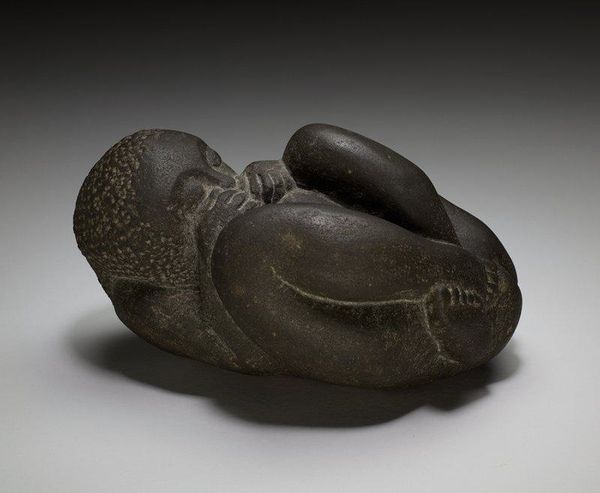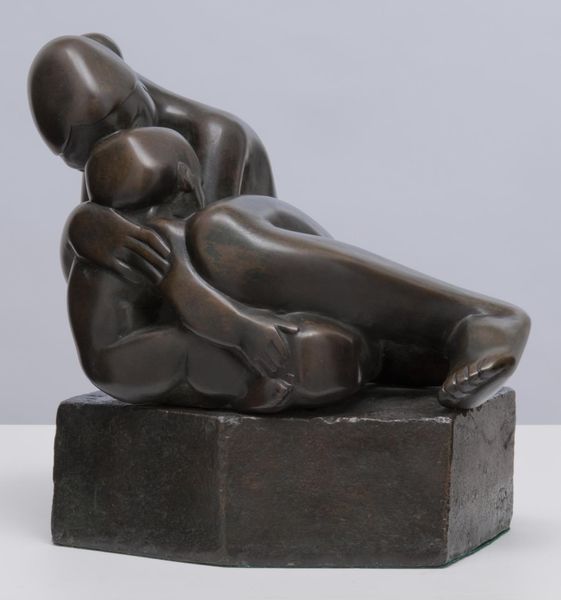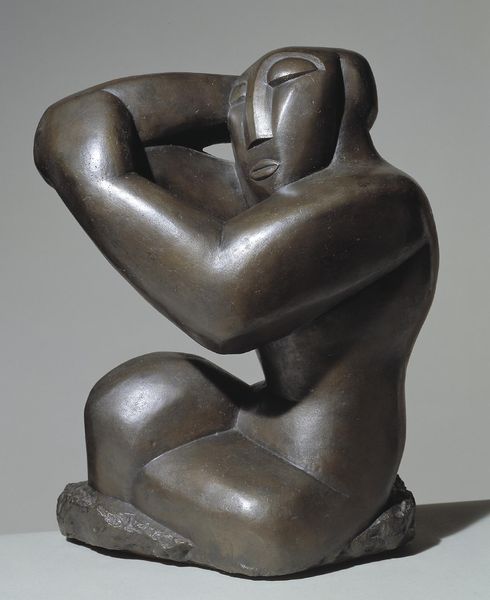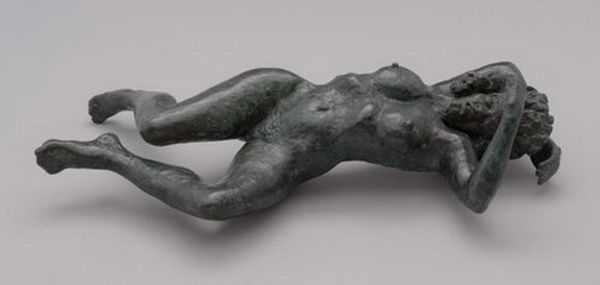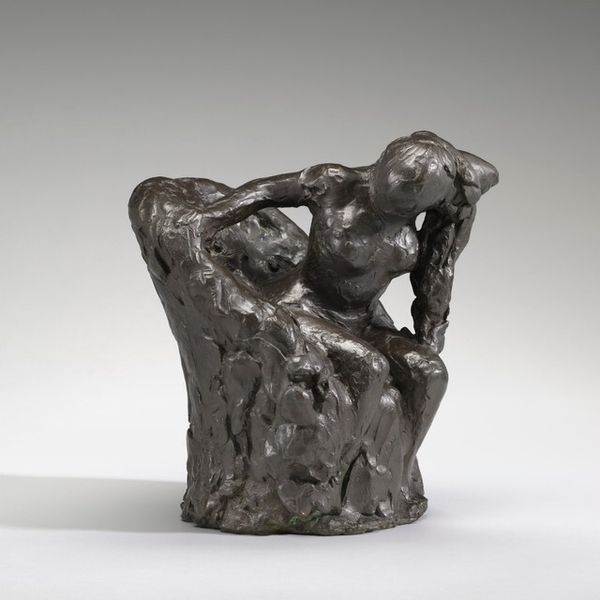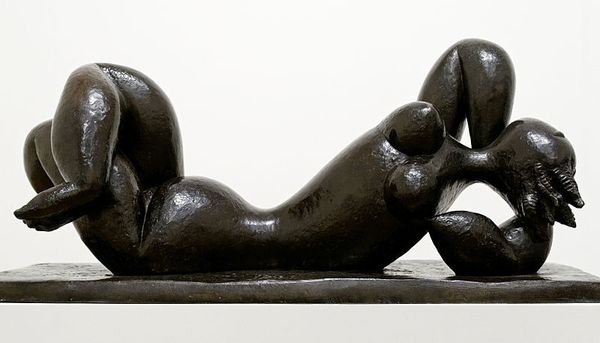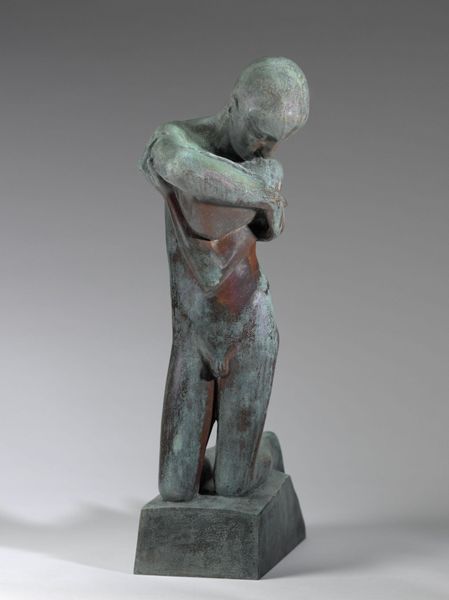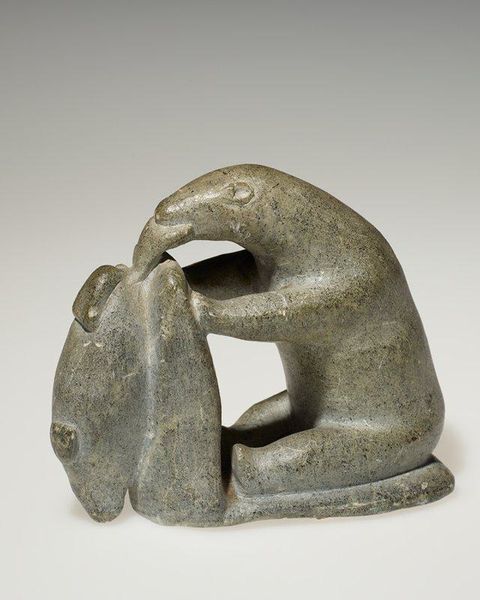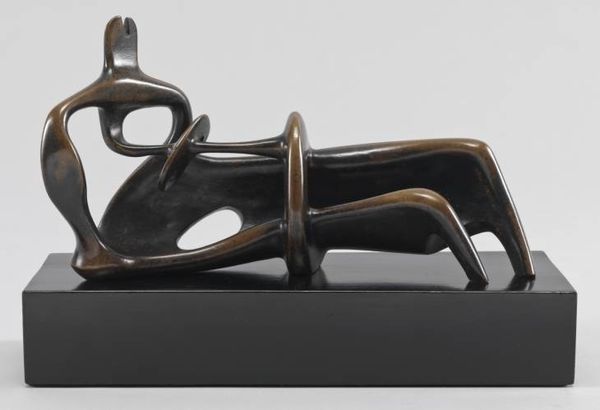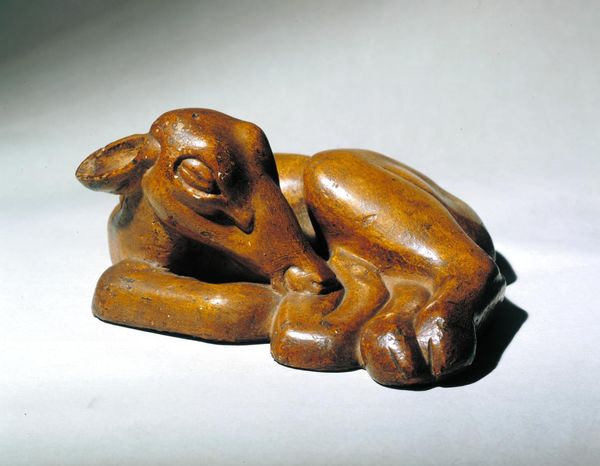
Dimensions: object: 114 x 273 x 197 mm, 6.1 kg
Copyright: CC-BY-NC-ND 4.0 DEED, Photo: Tate
Curator: Henri Gaudier-Brzeska’s sculpture, simply titled "Mermaid," captivates with its solemn repose. Editor: There's a palpable sense of melancholy; she seems burdened, almost defeated. Curator: Gaudier-Brzeska was deeply engaged with modernist movements, particularly Vorticism, but this piece feels more intimate. We see a classical subject rendered with simplified forms. Editor: The way the figure is fused with the base, almost emerging from it, speaks to the constraints placed upon women and the burdens they bear. Curator: This work also exists within a context of pre-war sculpture and anxieties of early 20th century culture. Editor: It's a powerful commentary on female representation, even today, considering how women's bodies are often displayed. Curator: Ultimately, "Mermaid" remains an evocative work, rich with nuanced possibilities. Editor: It's a quiet piece, that demands a deeper conversation about vulnerability and resilience.
Comments
tate 8 months ago
⋮
http://www.tate.org.uk/art/artworks/gaudier-brzeska-mermaid-t00846
Join the conversation
Join millions of artists and users on Artera today and experience the ultimate creative platform.
tate 8 months ago
⋮
Henri Gaudier-Brzeska wrote to his friend Sophie Brzeska in October 1913 about Jacob Epstein's latest sculptures: 'He is making some extraordinary statues like the Polynesians, absolute copies, with Brancusi-like noses.' This reveals that Gaudier-Brzeska knew of Polynesian sculpture as well as the recent work of Brancusi in Paris, and some influence from both sources can be seen here. However, this sculpture appears to owe its greatest debt to the work of Auguste Rodin, who made a similar figure a few decades earlier. Gallery label, August 2004
